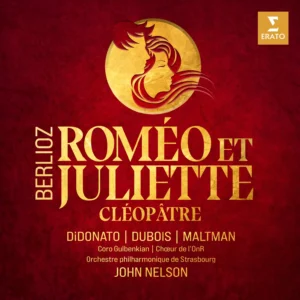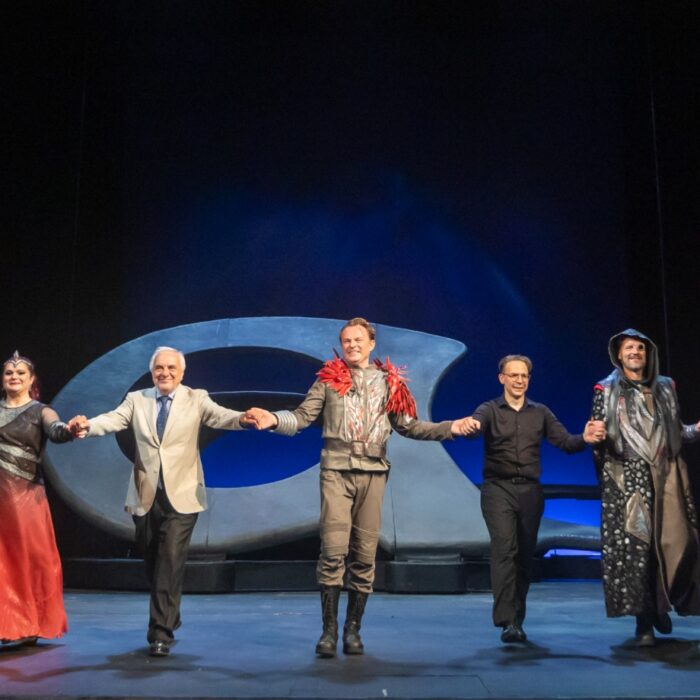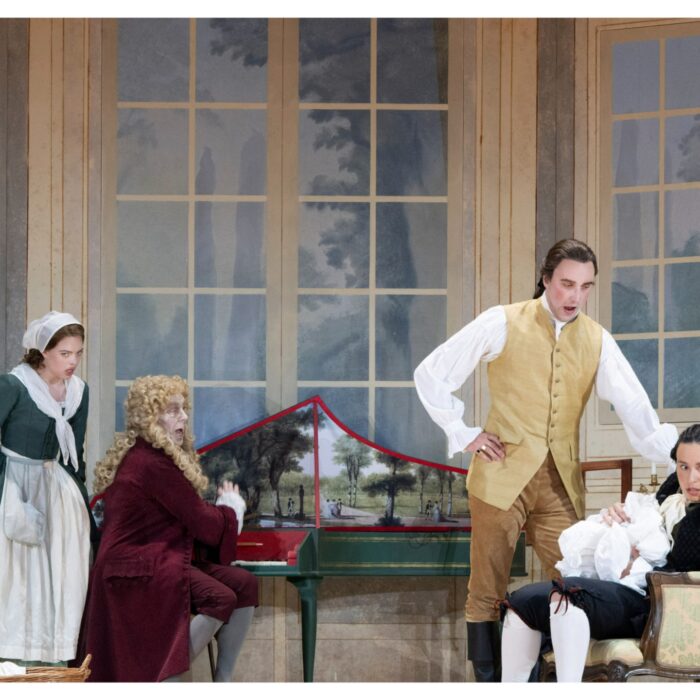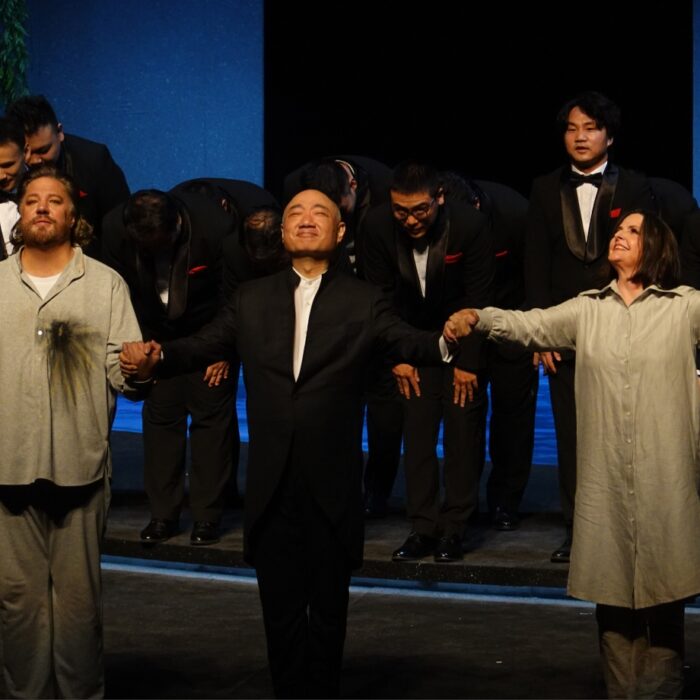
CD Review: Erato’s ‘Roméo et Juliette’
By Bob DieschburgPierre Boulez, eminent connoisseur of Berlioz and his oeuvre, has famously declared the French Romantic a key intermediary between Beethoven and Wagner, that is, respectively, the symphonic and operatic composers par excellence.
His “Roméo et Juliette,” written in 1839, is by no means an exception as it combines, so to speak, the best of both worlds: a symphonic enacting of the narrative with elements from a cantata topped off, after some 90-odd minutes, by a finale worthy of Beethoven’s 9th.
A symphonie dramatique and, as such, a true hybrid, it anticipates Wagner’s idea of the Gesamtkunstwerk and the fundamental role accorded to the orchestra which, unusually, represents the main roles of Roméo and Juliette as opposed to traditional singers.
It therefore comes as no surprise that the focus, in Erato’s new release, lies as much on conductor John Nelson and the Orchestre Philharmonique de Strasbourg as on his cast of soloists: Joyce DiDonato, Cyrille Dubois, and, lastly, baritone Christopher Maltman as Friar Laurence.
A Berliozian Romantic
John Nelson has been at the forefront of Erato’s revivalist interest in Berlioz since 2004 when he released “Benvenuto Cellini” with Gregory Kunde and DiDonato in the trouser role of Ascanio. With the Strasbourg Philharmonic Orchestra he recorded *Les Troyens” (2017), “La Damnation de Faust” (2019), and, recently, “Les Nuits d’Été” (2022), all well received and winning awards like the Diapason d’or and the Choc de Classica.
It goes without saying that both the conductor and his orchestra are more than familiar with the technical as much as stylistic demands of the Berlioz scores. Yet when compared to earlier recordings and, most notably, Pierre Boulez’ excellent rendition with the Cleveland Orchestra, a certain lack of finesse, no matter how minimal, makes itself noticeable on the musicians’ end.
The “Queen Mab” scherzetto, for instance, does not have the airiness of its rival recording. On the other hand, where Boulez’ strings tend to sound a little too reticent (as in the introduction), Nelson unfolds an unusual plushness, extending to the love scene with its beautifully varied dynamics in the strings and, finally, the sepulchral atmosphere of “Roméo au tombeau des Capulets.”
As for the choir scene, the writing naturally suits Nelson’s sensuousness. It is a truly bombastic finale which yet again, in the ears of who presently writes, does not stand unchallenged. In Maazel’s 1972 take on “Roméo and Juliette,” for instance, I find the sharp delineation of the strings very effectful whereas, under Nelson’s baton, the instrumental colors lose some if not most of their contour in the nearly unmitigated blend of the voices and the orchestra.
This is not to say the Erato release does not capture the essence of the Romantic ideal behind “Roméo et Juliette.” It does, however, tend to forgo some of the stylistic nuance connected, perhaps, to the Classical heritage of Gluck and others whose influence, by 1839, was still tangible in Berlioz’ re-thinking of musical standards and conventions.
A Ceremony of Voices
Despite the shortness of their parts, the three soloists are an undeniable asset to the current disc.
First and foremost, Cyrille Dubois phrases with wit and great attention to the notational intricacies of the scherzo. The vocal timbre is warm and has an innate charisma that some will recognize from his equally successful recordings of “Les Troyens” (again, under Nelson), Halévy’s “La Reine de Chypre” (2018) and the Pentatone release of “Les Pêcheurs de Perles” (2018) with an all-French cast.
Christopher Maltman is an imposing Laurence whose aria and the subsequent sermon of “Jurez donc par l’auguste symbole” have all the necessary gravitas for the score’s blend of mourning and, at the same time, solemnity to take hold. His voice stands large with cavernous depths and a pronounced, though not intrusive vibrato in the middle and upper registers.
Finally, DiDonato’s very measured and ceremonious performance may be the biggest selling point of the current release. As ever, she phrases intelligently and despite the occasional harshness in tone manages to imbue every word with a distinctly emotional subtext. Her “Prologue” then ranks among the more idiosyncratic on record, not as lush as Jessye Norman’s (under Riccardo Muti) but just as memorable in terms of musical ingenuity, including a wealth of shading and dynamic variation.
DiDonato in Egypt
Also, DiDonato features in the Erato set’s addendum to “Roméo et Juliette.” A scène lyrique called “Cléopâtre” (1829), it was composed by Berlioz in view of the prestigious Prix de Rome which, after submitting four cantatas in consecutive years, he eventually won in 1830.
All the stylistic hallmarks of his later works are already there and, to who currently writes, the largo of “Grands Pharaons, nobles Lagides” even seems to foreshadow some the most beautiful arias by Berlioz’ rival composers, notably “O ma lyre immortelle” from Gounod’s “Sappho.”
In any case, with Joyce DiDonato as the Queen of Egypt and the immersive conducting of John Nelson, “Cléopâtre” is ostensibly more than a footnote; rather it provides extra incentive to integrate the Erato release within the Berliozian discography, if not at the forefront then at least not far behind.


